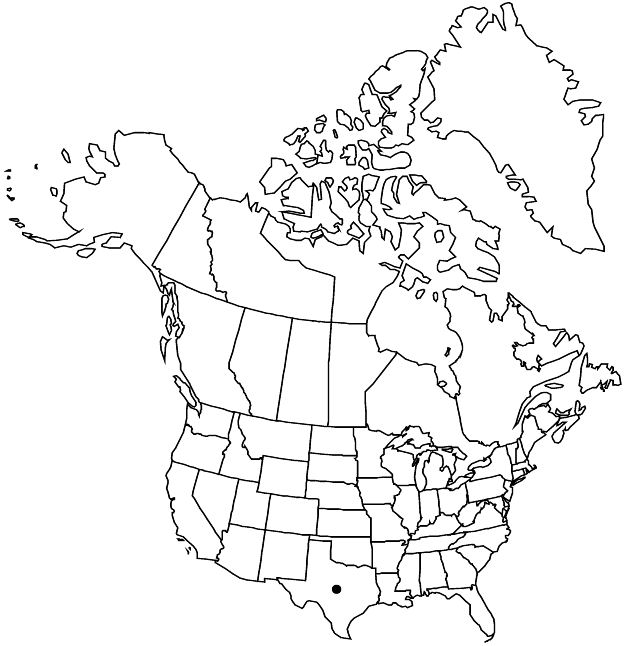Difference between revisions of "Frankenia johnstonii"
Rhodora 68: 424. 1966.
FNA>Volume Importer |
FNA>Volume Importer |
(No difference)
| |
Revision as of 20:17, 24 September 2019
Shrubs, ± sprawling, to 3 dm; branches hairy, hairs appressed. Leaves: petiole 0.7–2.2 mm, subcylindric and narrow distally, markedly tapering toward blade, apex narrower than base of blade; blade gray-green, narrowly obovate to oblong-elliptic, flat, (2.5–)3.5–9(–10.5) × (1–)1.3–3.2(–4) mm, margins slightly to loosely revolute, abaxial surface mostly exposed, adaxial surface sparsely hairy. Inflorescences usually solitary flowers, sometimes simple dichasia. Flowers: calyx 3.8–6.5(–7.5) mm, lobes 5, (1–)1.3–2.5 mm; petals 5(or 6), white, sometimes pink-tinged, spatulate, 6–10 mm; stamens (5 or)6, longer 3 exserted, 3.5–6.8 mm; anthers yellow; style exserted, 3-branched; ovary 3-carpellate; ovules 3, attached basally, pendulous on recurved funiculi. Seeds 1 per capsule, elongate-ovoid, 2–3.1 mm.
Phenology: Flowering year-round.
Habitat: Alkaline, saline and gypseous, clay and sandy clay to loam soil, hillsides and saline flats
Elevation: 50–200 m
Distribution

Tex., Mexico (Nuevo León, Tamaulipas).
Discussion
Frankenia johnstonii occurs in Starr, Webb, and Zapata counties in southern Texas and in northern Mexico. In 1984, it was federally listed as endangered; it was thought to occur in relatively few localities. Extensive surveys conducted in southern Texas by with the cooperation of local landowners revealed additional populations (G. K. Janssen 1999). In 2003, the U.S. Fish and Wildlife Service proposed to remove this species from the list of endangered plants. As of 2012, it had not yet been delisted.
Of conservation concern.
Selected References
None.